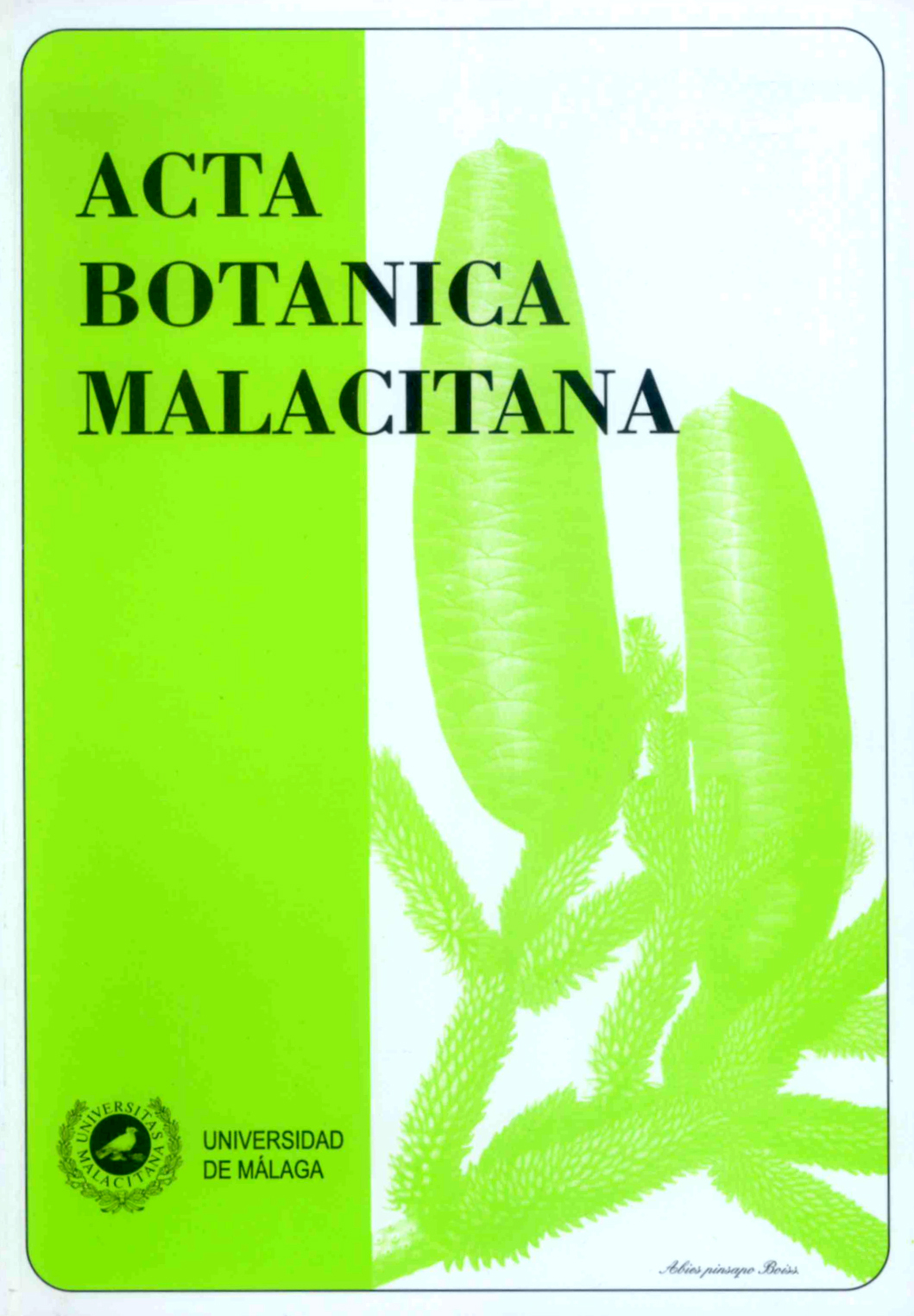Nuevas aportaciones al conocimiento de la vegetación luso-extremadurense. Estudio de las Sierras de las Villuercas (Extremadura, España) y San Mamede (Alto Alentejo, Portugal).
DOI :
https://doi.org/10.24310/abm.v33i0.6977Résumé
RESUMEN. Nuevas aportaciones al conocimiento de la vegetación luso-extremadurense. Estudio de
las sierras de las Villuercas (Extremadura, España) y San Mamede (Alto Alentejo, Portugal). La
región fronteriza entre España y Portugal muestra aspectos diferentes en cuanto a la utilización del
territorio sobre la vegetación y el paisaje, lo que repercute en los complejos de vegetación, aunque
nos encontremos en lugares biogeográficamente similares. En la frontera portuguesa altoalentejana
abundan los minifundios y el uso del territorio es muy intenso. Por el contrario, en Extremadura, en
las cercanías a las Sierras de Las Villuercas, dominan los latifundios con una intensidad de uso menor
a la zona estudiada en Portugal. Fruto del estudio de ambos territorios, se presenta el esquema
sintaxonómico, así como las principales novedades fitosociológicas encontradas: 2 alianzas (Hyperico
perforati-Ferulion communis, Adenocarpion argyrophylli), 9 asociaciones (Sileno acutifoliae-
Dianthetum lusitani, Feruletum communis, Raphano raphanistri-Diplotaxietum catholicae, Rumici
angiocarpi-Coleostephetum myconis, Armerio francoi-Arrhenatheretum sardoi, Festuco
multispiculatae-Arrhenatheretum sardoi, Festuco multispiculatae-Agrostietum curtisii, Rubetum
ulmifolio-vigoi y Rubetum ulmifolio- caesii), y 12 subasociaciones.
Palabras clave. Alto Alentejo, Extremadura, sintaxonomía, vegetación.
ABSTRACT. New additions to the knowledge of the luso-extremadurense vegetation. Study of the
Villuercas (Extremadura, Spain) and San Mamede Mountains (Alto Alentejo, Portugal). The border
region between Spain and Portugal shows interesting aspects of human activity on vegetation and
landscape. These are reflected in the present vegetation patterns. These differences are also present
in biogeographical similar territories. In the Alto Alentejo Portuguese border, smallholding (family
economy) predominates, and the use of soil is very intensive. On the other hand, in Extremadura,
close to the Villuercas Mountains, latifundia are normally observed, with few intensive uses than in
Portugal. From the study of vegetation of both zones, here are presented the syntaxonomic scheme
and the most repesentative novelties. These novelties are: 2 alliances (Hyperico perforati-Ferulion
communis, Adenocarpion argyrophylli), 9 associations (Sileno acutifoliae-Dianthetum lusitani,
Feruletum communis, Raphano raphanistri-Diplotaxietum catholicae, Rumici angiocarpi-
Coleostephetum myconis, Armerio francoi-Arrhenatheretum sardoi, Festuco multispiculatae-
Arrhenatheretum sardoi, Festuco multispiculatae-Agrostietum curtisii, Rubetum ulmifolio- vigoi and
Rubetum ulmifolio-caesii), and 12 subassociations.
Key words. Alto Alentejo, Extremadura, syntaxonomy, vegetation.
Téléchargements
Métriques
Téléchargements
Publiée
Comment citer
Numéro
Rubrique
Licence
Toutes les informations concernant la licence d'utilisation des travaux publiés dans Acta Botanica Malacitana et les droits d'auteur sont disponibles dans notre Politique Éditoriale.







1.png)


